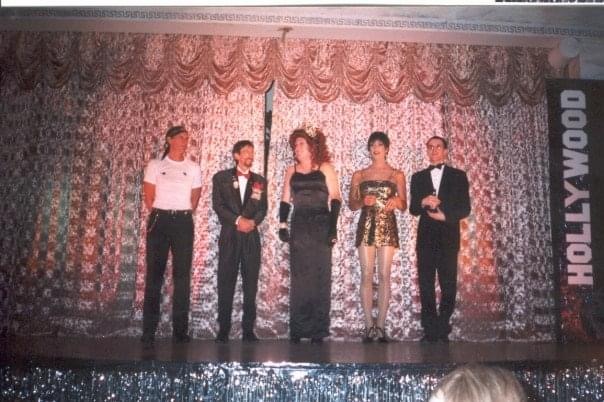The Imperial Sovereign Court of the Wild Rose is a unique organization in Edmonton. The core of its existence is based on delivering entertainment primarily through drag queens performing lip-synced numbers in glamorous and often over-the-top costuming. It also holds the distinction of being the longest continually running LGBTQ2S+ organization in Alberta.
Since 1976, the organization has held the annual Coronation Ball- a formal dinner and show often held in a hotel ballroom. The evening’s highlight is the crowning of two elected representatives from the community who hold the titles of Emperor and Empress. Their role for the coming year (aided by a Prince and Princess) is to lead the organization by representing Edmonton at some of the more than 65 Coronation Balls held in Sister Courts throughout North America. They also spearhead numerous fundraising events for selected community and charitable groups serving the Edmonton area. The evening is also when the previous Emperor and Empress conclude their reign by stepping down to make way for the new monarchs.
The Imperial Sovereign Court of the Wild Rose (ISCWR) is a member of the International Court System (ICS). ICS is a network of grassroots organizations that work to build community relationships for equality and raise monies for charitable causes. It is the second largest LGBTQ2S+ organization in the world behind the Metropolitan Community Church. Formed in 1965 by San Francisco community activist Jose Sarria (and joined in 1971 by Portland, Seattle, and Vancouver) the ICS functioned primarily as an entertainment vehicle with a minor focus on raising monies which were primarily used to support the annual Ball held for the gay community. At the Ball, guests would dress up in formal wear and fancy costuming.

The Vancouver Court was headed by ted northe (who always spelled his name in the lowercase), a community leader, activist, and confidant of then Justice Minister and future Prime Minister, Pierre Elliot Trudeau, in the late 1970s. Mr. northe had been appointed the Empress of Canada by the Imperial Sovereign Rose Court of Portland in 1971. His conversations with Trudeau led Canada to decriminalizing homosexuality. His story and the re-telling of those conversations are explored in “The Empress and The Prime Minister,” a play written and performed by Darrin Hagen.
In March 1976, John Reid (an owner of Flashback,) Bob Pellerin and Duane Shave, travelled to Vancouver to attend the stepping down of Emperor 4 (Larry) and Empress 5 (The Widow Lenny.) That April, excited by the pageantry and regal atmosphere witnessed in Vancouver, they met with some notable members of Edmonton’s queer community to explore if Edmonton should also form an Imperial Court. In the penthouse apartment of Jimmy Stevens and his partner Jack, their neighbour Jean Lawson, then co-owner of Flashback Paul Chisolm (Millie), Michael Jacobs (Felicia), Ron Byers, Tony Janson, Brian Ponto (Grindl), Bob Brannigan and others formed the Imperial Sovereign Court of the Wild Rose. Several months later, the Empress of Canada (ted northe) attended the first Coronation Ball in Edmonton to bestow the Court’s official charter.
The first Coronation Ball was held at the then Executive Hotel on 105 Street. Brian L. was crowned as the first Emperor but, after being accused of stealing the monies raised from that first Ball, in addition to a murder charge several months later, he was stripped of his title and removed from the records of the ISCWR. The first Empress was Paul Chisholm, known formally as Millicent but usually just called Millie. In addition to being the Matriarch of the ISCWR, Millie was also the first Indigenous person elected to the title of Empress in Canada. Hailing from the Lac La Biche area in Treaty 6 territory, he led that first year with dignity and grace.
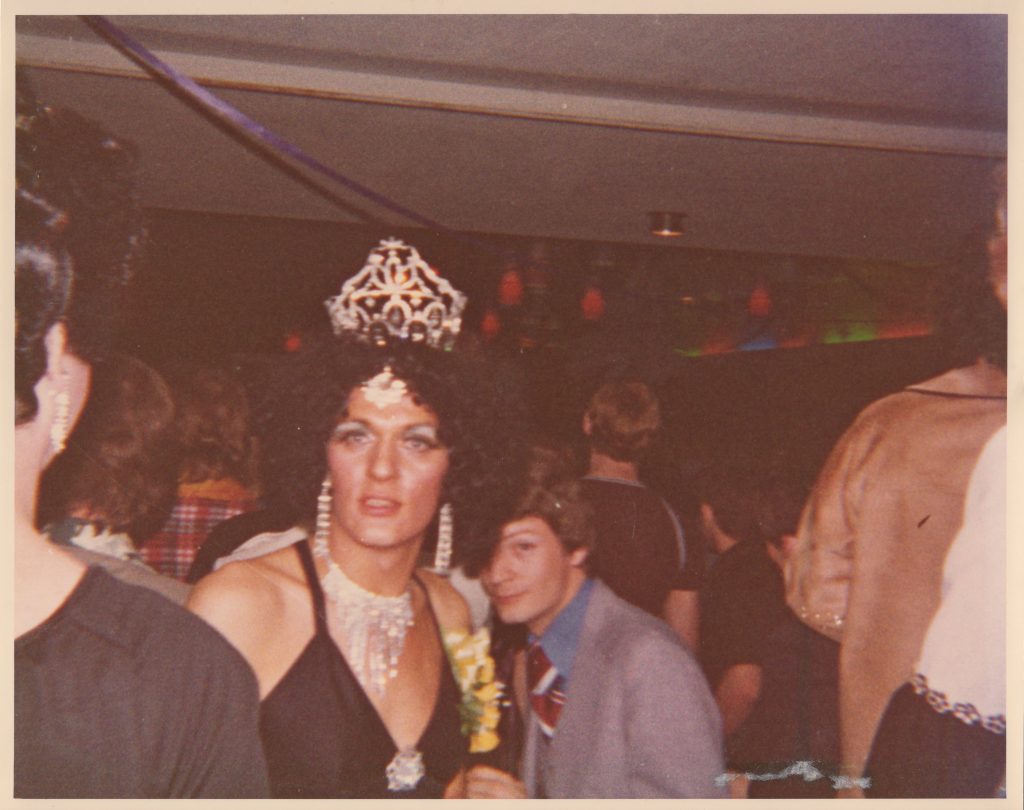
The second Coronation Ball was held at the Chateau Lacombe. By that time, the ISCWR had started to garner media attention. On August 8, 1977, Bob Remington of the Edmonton Journal noted that “visitors to the Chateau Lacombe Saturday night were mildly shocked at the site [sic] of 500 homosexuals who staged a social ball complete with ‘drag’ attire.” That evening, John Reid was crowned Emperor 2. His close friend, Duane Shave who was known as Chatty Cathy, was crowned Empress 2.
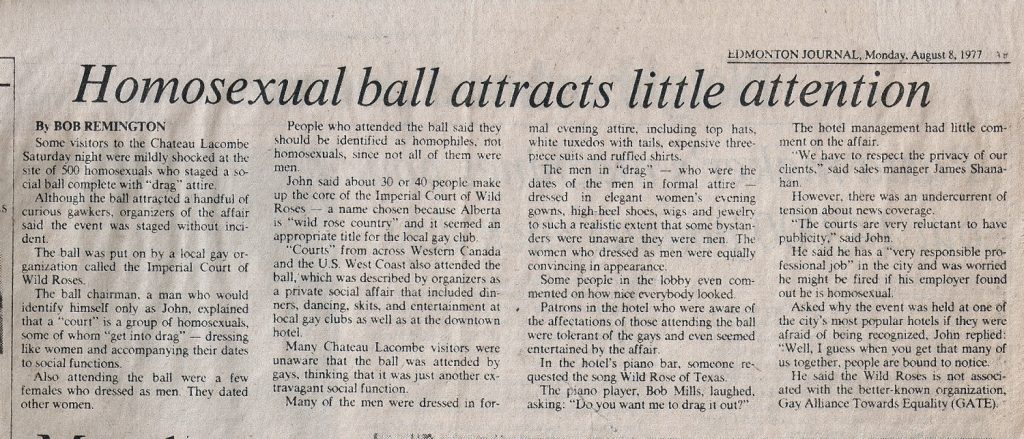
On March 26, 1996, Empress 1 Millie/Paul Chisholm, passed away. Following his death, Empress 2 Chatty Cathy/Duane Shave became the Matriarch of the ISCWR, a distinction held to this day.
Throughout its first 25 years, the ISCWR re-shaped drag entertainment in Edmonton and created recognition programs for the LGBTQ2S+ community. The ISCWR also challenged the rigid notions of the International Court System. Since the ICS was based on drag, the organization was singularly focused on the gay men. However, this was challenged by the ISCWR in 1985 when Jean Lawson, a straight woman, was appointed as Empress 10 to serve in the absence of the abdicated Empress 10, Amii L. Nitrate. “Mother” Jean Lawson was a long-time friend of the queer community and played a role in forcing the very closeted gay club scene to be more accepting of those from outside their community. In 1986, the community elected Edmonton’s first lesbian Emperor, Signy Eggertson, followed in 1988 with Canada’s first black Empress, Gracie Spoon, and Canada’s first female Prince, Pepe (Joanne McDougall.)
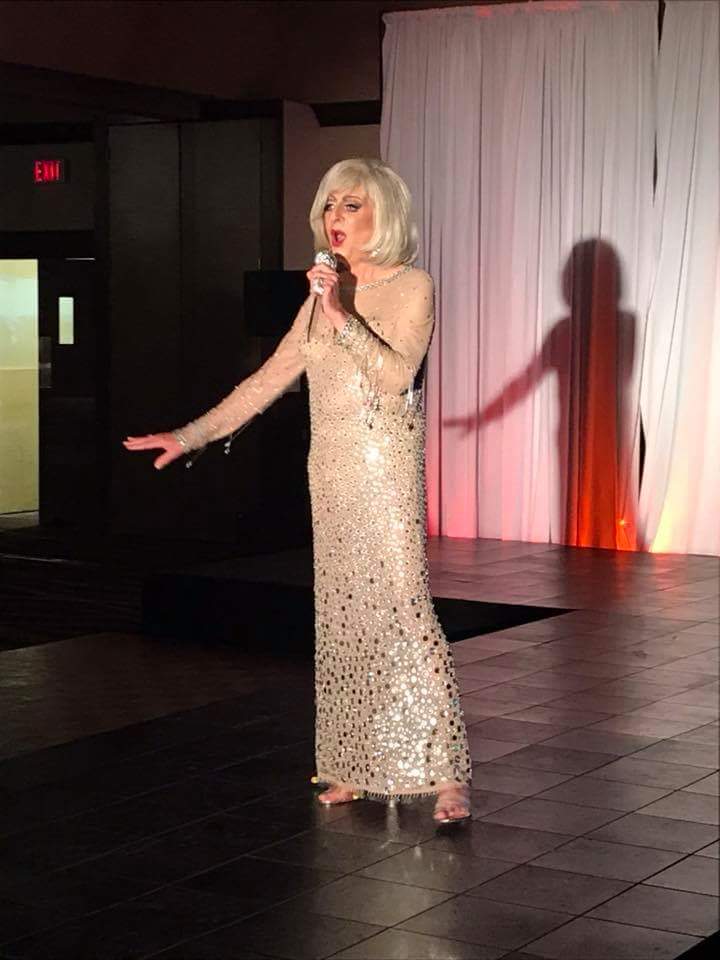
Matriarch and Empress 2 Chatty Cathy Jackson in 2018 at her Forty-Year Celebration. Photo provided by author. 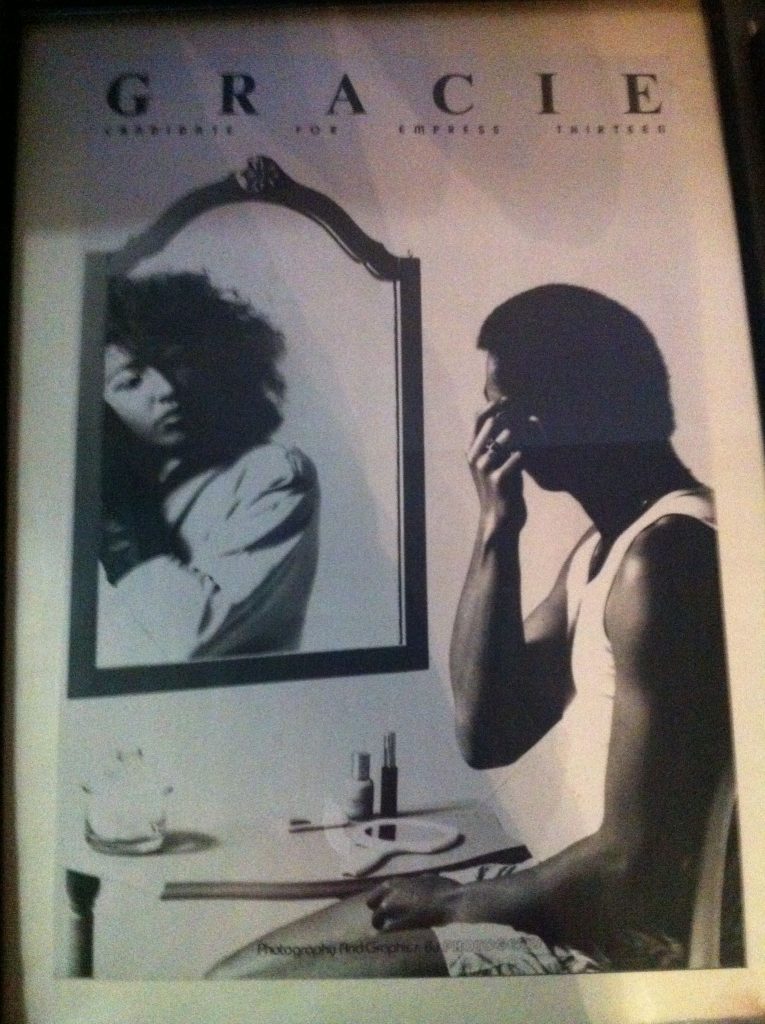
Campaign Poster for Empress 13 Gracie Spoon, 1988. Photo provided by author.
The Edmonton drag community, which included members from the ISCWR, re-invented traditional drag shows by presenting fully choreographed Broadway performances. The first show of this kind was performed at the first Flashback club in the spring of 1977. At the third Coronation Ball, where Emperor 2 John and Empress 2 Chatty Cathy stepped down, the ISCWR presented Hello Dolly! with Chatty Cathy performing the lead role. For many decades, the Edmonton Court became well-known across the ICS circuit for these lavish choreographed and costumed productions.
As part of its focus on serving the LGBTQ2S+ community, the ISCWR created the John DeSmit Memorial Citizen of the Year award. Named after a community leader, the award is presented to an individual who has contributed to making Edmonton’s gay community a better place to live. The first award was presented to John Reid in 1988 for his efforts in bringing the gay community out from behind locked doors with Flashback and the establishment of the ISCWR. The award has been presented annually since that year with some notable recipients being Councillor Michael Phair (1983), Boots ‘N Saddle owner Conrad Dragu (1993), former head of the Edmonton Pride Centre Fred Dicker (1998), community activist and former Police Commissioner Murray Billet (2005), MLA Laurie Blakeman (2007), and Mayor Stephen Mandel (2012).
The John M. Kerr Memorial Bursary Award, as it is known now, was established in 1984 at the stepping down of Emperor 8 Rick and Empress 8 Mary Mess (Michael MacKinnon). Named for the late John (Gramma) Kerr, the scholarship has been presented annually and thousands of dollars have been awarded at the Coronation Balls to students within the LGBTQ2S+ community attending any accredited post-secondary program in Alberta. John Kerr was instrumental in creating and choreographing the first production-style drag shows. He was also the manager of the Pisces Bathhouse in Edmonton which was raided by police and RCMP in 1982.
1984 was a pivotal year for the ISCWR and all member Courts of the ICS as the AIDS epidemic began to ravage gay communities. Mainstream society was reluctant to fund research and care for those afflicted. Seeing the need to assist research and compassion programs in Edmonton, the ISCWR began raising money. Funds raised were donated to the University of Alberta’s HIV Research program and the newly formed AIDS Network (now HIV Edmonton.) The very first cheque given to the AIDS Network came from the ISCWR. With this renewed mandate, the ICS evolved to become a major fund-raising organization, supporting community charities and services, as well as their own charitable works and programs. This remains as the prime focus for the organization, with close to a million dollars donated to a variety of local Edmonton recipients and millions donated by the ICS internationally.
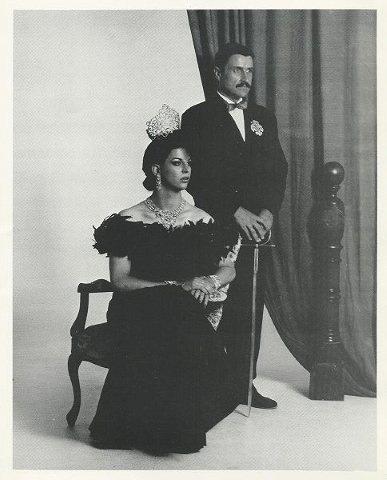
As the organization approached its Jubilee year in 2001, the ISCWR significantly impacted Edmonton’s queer community once more. The Edmonton Pride Festival started out as Gay Pride ’83 and was mostly small gatherings put on by the Gay and Lesbian Awareness (GALA) organization. These events gradually expanded, gaining recognition until, in 1993, Mayor Jan Reimer proclaimed June 26 “Gay and Lesbian Pride Day.” In 1998, Pride had expanded to a point where it needed more input from other community groups, and it was restructured to include representatives from Edmonton’s queer businesses and organizations. In 2001, the ISCWR representative to the Pride Festival group was the Jubilee Emperor 25 Ron Byers. With the help of Boots bar’s representative, manager Patrick Ryley, they reformatted the Edmonton Pride Festival from a string of small events by each of the community’s groups to one larger, inclusive day-long festival featuring the parade and culminating at a main gathering area, then located at the Oliver Community Arena. Inside, people gathered to enjoy entertainment on stage, play carnival games, eat hot dogs and snacks sold by the PFLAG group, take in the business fair sponsored by the Edmonton Rainbow Business Association, knock back a few beers in the beer garden managed by the Northern Chaps Leather Community, and more. This new format had remained the base concept until the last Edmonton Pride Festival event in 2018.
In the years leading up to its 25th year, the ISCWR not only raised money for needy groups and organizations through activities such as shows and BBQs in the bars, but it also established working relationships with other groups to jointly raise money and provide meal service to the Great Alberta Campouts. This helped them in giving back to the community in philanthropic ways. The combination of long-standing community partnerships with charitable contributions provide some great reasons to celebrate the ISCWR on its Silver Jubilee Anniversary.
Ron Byers © 2020
Read Part 2: The Next Twenty-Five Years
